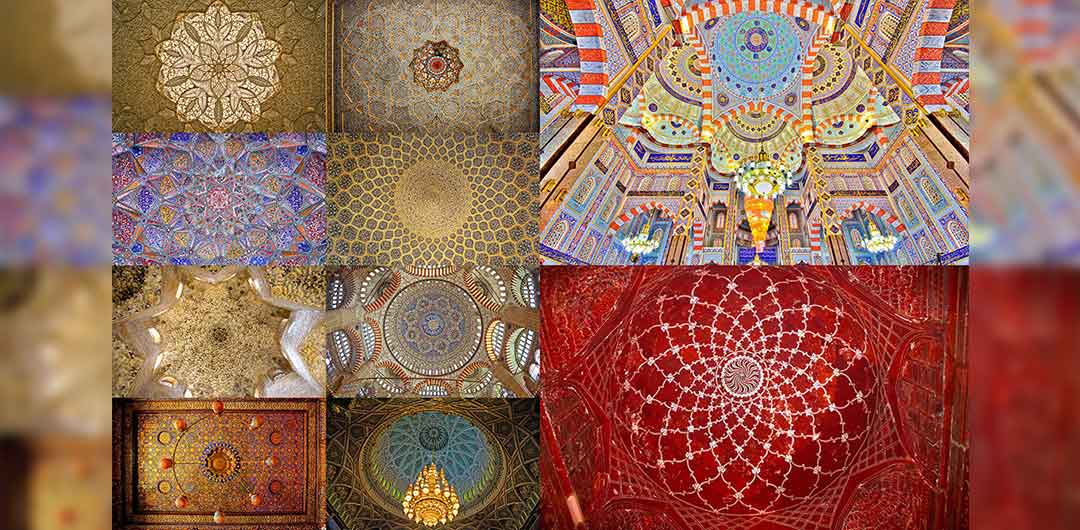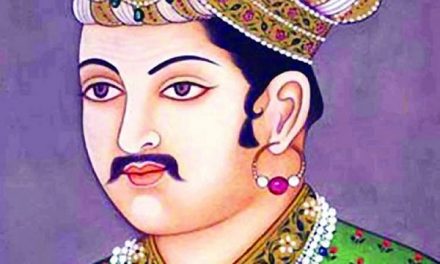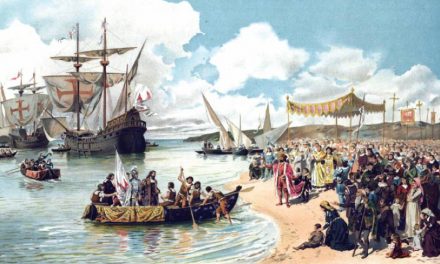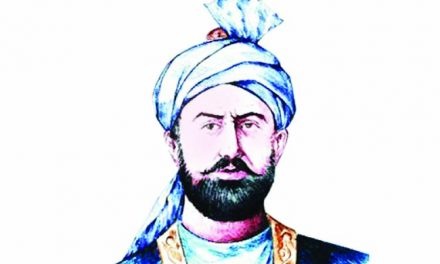
The journey of Islam from the Middle East to the land of India has remained to be one of the most remarkable turning points in world history. India has been a land well protected by its natural barriers with the Arabian Sea in the West, the Himalayas in the North and the Indian Ocean in the South. Overcoming these hurdles, a series of invasions and migrations took place over centuries by countless civilizations such as the Huns, the Aryans and the Arabs. Although trade relations between Arabia and India existed in the pre-Islamic era, the first incursion to India by Muslim through sea occurred in the mid-7th century during the Rashidun Caliphs, long before any Arab military entered India by land. Arab visitors and traders became the leading carriers of the Arab culture and Islamic values to India. They passed these values to locals wherever they visited in India.
In the early 8th century, Islam made its way through the natural frontiers of India in a much bigger way,, laying the ground for the Muslim heritage in a new land. The early Arabs extended their boundaries beyond the Middle East through various ways which included commercial, military and cultural ties with North India. The mode of the initial contacts between the two groups was not military but rather highly commercial. This commercial extension of Islam through the Arab merchants and Indian traders continued contributing to the cordial exchange of cultures, creating a fusion of different worlds and communities.

For centuries, India has been a land of scope and opportunities for suitable establishments in the eyes of foreign invaders. Despite its challenging regional boundaries, this land has been the cradle for the rise and fall of multiple dynasties. With time, North India’s prominence grew for its trade ties along the western coastline and the Silk Road. Tales of this diversified land travelled far through Arab merchants, and soon, enthusiasts and visitors beyond the shores of India started appearing. From the 7th century, what followed was the journey of Islam conquering India, spreading across the land over 500 years.
Commander Muhammad bin Qasim led the first Arab invasion of India as he took over the Sindh province and with this conquest; he moved the commercial frontier of Islam beyond Sindh into the interiors of North India. In the 7th century, Bin Qasim defeated Raja Dahir, who was the main leader of the Hindu Shahi Kingdom in Sindh. As the main leader of the resistance was defeated, Arab settlements began to grow in certain pockets of Sindh and Multan. These settlements promoted and allowed interactions between conquerors and the indigenous populations of that area. Eventually, the Turks followed the Arabs, and during the 11th to 13th century, Turkish invasions took place in India. The ‘Chach Nama’, which is a vast complication of documents written originally as a part of the Arab conquests gives a detailed account of the Sindh invasions during the 7th century.
The Ghaznavid invasions led by Mahmud of Ghazni in the 11th century marked the second wave of Islamic influence in India. The Ghaznavids extended their conquests mainly for plunder and ransack which were taken back to Ghazni. During this period, there was a sudden upsurge of violence and mass destruction of temples, mosques and properties. Muslim expeditions became rather violent and often ended with loot and bloody battles. There was no consideration of a permanent hold over the areas which had been grasped. As more land was explored and Muslims kept pushing in further, the Arab entity did not consist of only nomads but rather a mixture of Turks, Afghans and Arabs.
The third and final wave of the Islamic spread was marked with the arrival of Mumluk dynasty that extended their territory to Delhi. Unlike the Ghaznavids, these people were farsighted and held more prosperous intentions for themselves in India. As the Mumluks conquered during the 11th century, they were already exposed and well-acknowledged to the classical world. They were highly educated and had an institutionalized approach towards their tax-revenue system, land reformation and governance. Since they had a firm intellectual hold over their administration, they wanted to spread and prove the true glory of Islam through their rule. This was also the same time when attacks from Mongol surfaced, and local people were desperately in search of a safe haven. The Mumluks kept expanding their territory over India, by concentrating on trade and commerce. Until now, trade ties were mostly bounded through the coastal ports, but the Mumluks widened their business through Venice, Egypt and many other places. Instead of adapting cynical approaches such as forced religious conversion and violence, these people promoted trade and culture. Once their rule in India was secured, and the initial purpose was served, these Muslim rulers had even greater aspirations in mind; to stretch beyond India.
Around the end of the 12th century, India was invaded by Muhammad Ghori, under whose rule; the Sultanate dynasty was established onto the soil of Delhi. This was a period of a huge expansion, and Islam began to move towards Bengal from North . When Bengal was under the rule of the great Pala dynasty it was predominantly Buddhist and actively promoted Bengali literature. The Pala dynasty was established in the 750 AD which was also the same year in which the Abbasids came to power in present day Baghdad. Around the 11th century, travellers, merchants and rulers emerged from the South into Bengal for commercial and political purpose. With the Pala dynasty withering in power, these foreign invaders easily outstripped the Buddhist rule and established the next great rule; the Sena dynasty. The Senas were Hindu rulers from the South, being much less pluralistic and more ambitious in their characteristics. They wanted to signify their glory by practising forced conversion from Buddhism to Hinduism on their people.
At that time, the well-established Sultanate rule in Delhi was in the hands of Sultan Qutb al-Din Aibak, and he was keen to expand his reign towards Bengal. The Sultan assigned a General named Muhammad Bakhtiyar Khalji to take his expansion forward. In the book ‘The Muslim Heritage of Bengal’, the author Muhammad Mojlum Khan talks about a detailed description of how Islam was founded in Bengal. General Khalji was a very ambitious man and soon expanded his dominance without facing much resistance from the local people. The people of Bengal were suffering at the hands of intolerant Sena rulers; thus, they welcomed this new hero with the hope of a better entity. The outcome was phenomenal; the Sena dynasty was easily overthrown through the defeat of Lakshman Sen, and Muslim rule was founded in Northwest Bengal. After years of an extreme caste system and social hierarchy promoted by the Hindu ascendancy, people of Bengal found a new ray of hope under the Muslim rule.
After conquering Bengal, General Khalji moved towards Tibet but died shortly after retreating from a disastrous defeat. The Sultanate period in Bengal began in the 13th century and prospered all over. In contrast to former rulers, Muslims were exceptionally tolerant and liberal-minded. They were business-oriented people who promoted vast learning and research. As Bengal had the gift of a well-established seaport, they quickly flourished their business here too. The Chittagong seaport allowed exchange all the way to China, developing a cultural fusion through trade along the way. However, this was not the first time when these commercial transactions occurred. The presence of gold Ashrafi coins from the Abbasid period in 7th century’s Bengal confirmed earlier Pala dynasty trade ties with the Middle East. The Bengal Sultanate was considered to be one of the greatest trading nations of the world.
Besides vast trade and commerce, Sufism was another gateway for Islam to spread over Bengal. The cordial and peaceful nature of Sufism influenced several to convert to Islam and form its group of preachers. In fact, Islamic influence was already embedded during the early reign of Sena dynasty through foreign traders and merchants. These people not only brought merchandise with them but also their faith and culture. Sufism embraced all cultures and conveyed the true essence of Islam; peace. During the reign of Lakshman Sen, Sufi Sheikh Jalal al-Din Tabrizi attracted a vast number of people towards Islam. He was one of the earliest Sufis to come to Bengal and was even granted land for his religious practices by Lakshman Sen. Slowly, mosques developed and Muslims grew in large number. In the 13th century, Sultanate rule was successfully extended and established on the coast of Bay of Bengal. They embraced the local people of their new land with open arms and won their hearts through intellectual acknowledgment. There was no forced conversion but a union of all cultures, faith and practices.
Muslim rulers were not only open-minded but also were excellent psychologists. They very well understood the importance of keeping an undivided population; one that accepted them and their reign. For the first time, general people were recognized with religious, political and social rights. The rulers must also be credited for preserving Bengali language and for translating Sanskrit to Bengali, making it easier and available to everyone. Earlier, important books like the Ramayana and Mahabarata were meant only for the elite Hindu class. Muslim rulers changed this forever by translating these to Bengali and made them universally available for everyone. Alongside, they promoted vast literature and translated important Islamic books. There was a wonderful fusion of religion and culture in the post invasion scenario. In a sense, Islam was the central perception which united people and removed segregation from the land of Bengal. The religion penetrated democracy and independence everywhere it was adopted and spread through Bihar, West Bengal and beyond. It was not only swords but boundless intellectual property and values that made Islam more acceptable as heritage across the land of Bengal. The great Mughal Empire eventually succeeded the Bengal Sultanate in the 15th century.
Riffat Ahmed is the Chairperson of Siddiqui’s International School, Treasurer of Bangladesh English Medium School Forum and a Psychology graduate from the University of Dhaka.
Khaled Khan is an academic with interest in history, civilization, and computer security. He currently teaches at Qatar University




